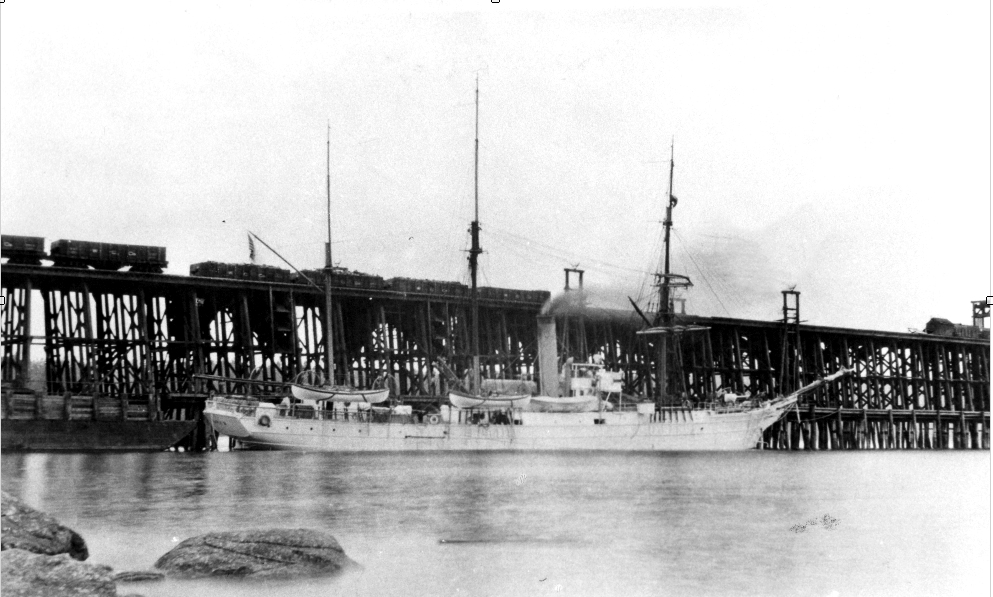USS Bear At The Big Wharf, Ladysmith Harbour

Sources: Ladysmith Archives, Ships history: Wickipedia, Naval History and Heritage Command USS Bear (AG-29), theguardian.com US news Oct 15 2021, explorersweb.com, naval-history.net
Date: Circa 1918
The USS Bear is one of the most famous ships to have visited Ladysmith Harbour.
Built in Scotland in 1874 as a sealer with modifications to withstand sea ice and with dual sail and steam power, the ship was very advanced for its day, a forerunner of modern ice-breakers. It was purchased by the US Navy in 1884 for use in rescuing what remained of the ill-fated Greely Arctic expedition. In 1885, she was transferred to the US Revenue Cutter Service (later the US Coast Guard) and by 1929 had made 34 voyages to Alaskan and arctic waters as a patrol ship, saving lives and dispensing justice in the remote and often challenging region. “During Bear’s 40-year career in Alaska, the cutter performed some of the most daring and successful Arctic rescues in history. And when malnourished Native Americans needed food, Bear brought it. When stranded whalers needed rescue, Bear saved them. One hundred years ago, when thousands of Alaskans contracted the Spanish flu during the pandemic, Bear brought doctors and medicine.” (quote from William Thiesen, the Coast Guard’s official historian for the Atlantic area).
She assisted with relief efforts after the 1906 San Francisco earthquake.
The Bear regularly coaled at Ladysmith on her way between Alaska and her home base in California. Her logbook, quoted here, shows she was in Ladysmith on Monday, November 11th – the day World War 1 ended: “1.00 to 3.00, company of infantry participating in parade ashore through city of Ladysmith helping local authorities to celebrate cessation of hostilities at their request.”
Sold by the US Coast Guard in 1929 to the City of Oakland for use as a museum, the ship starred in the 1930 film version of Jack London’s ‘The Sea Wolf’. Her subsequent services included supporting Admiral Richard E Byrd’s 1934 Second Expedition to Antarctica. She went again to Antarctica twice between 1939-1941 to evacuate Americans at the beginning of World War II. She later served in patrol duty off the coast of Greenland before being decommissioned in November 1944.
After World War II, Bear was sold for conversion back to sealing. Finally, in 1963, while being towed to a stationary assignment as a floating restaurant in Philadelphia, Bear foundered and sank during a gale in the North Atlantic Ocean about 100 miles (160 km) south of Sable Island, Nova Scotia.
On October 4th, 2021, the US Coast Guard and the US National Oceanic and Atmospheric Administration (NOAA) announced that they had found the long-lost remains of Bear by using advanced remote vehicles fitted with videography equipment.
The legend of the USS Bear is so ingrained in US Coast Guard lore that the sports teams at the Coast Guard Academy in Connecticut are named the Bears, partly in honour of the vessel.

